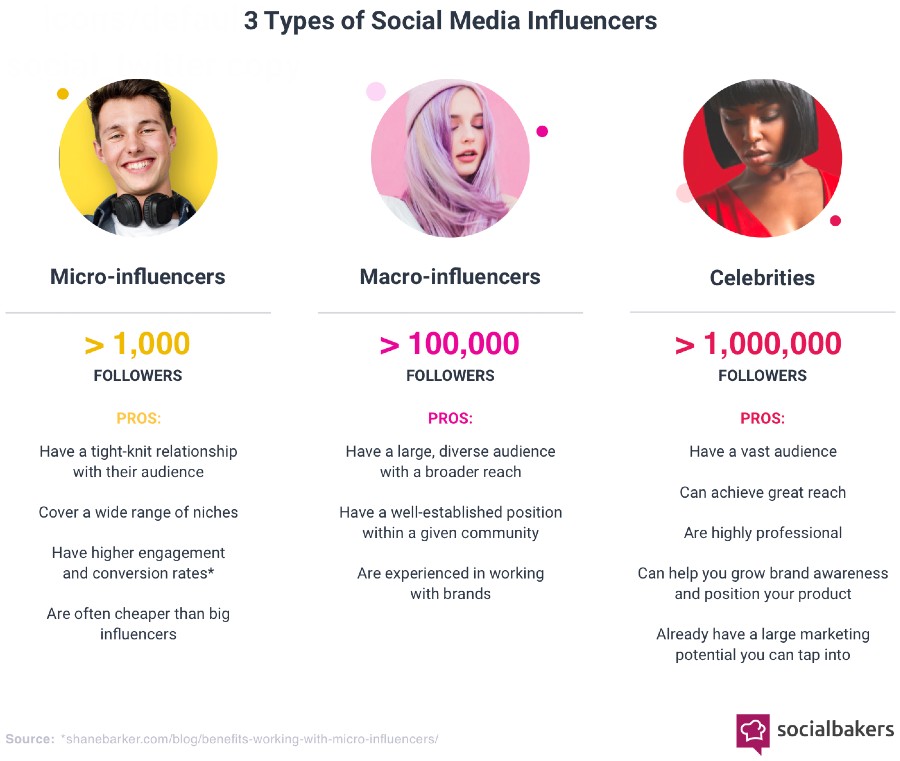The Role of Micro-Influencers in B2B Social Media Marketing: A Case Study Approach
Meta Description: Explore how micro-influencers reshape B2B social media marketing. Discover actionable case studies and strategies to enhance your marketing efforts.
In the fast-evolving landscape of digital marketing, the emergence of micro-influencers is reshaping how businesses approach their engagement strategies on social media. As B2B marketers seek innovative ways to connect with their audiences, understanding and leveraging this new breed of influencers can prove invaluable. This blog serves to educate B2B marketers, business owners, and professionals about the significance and practical applications of micro-influencers in their marketing strategies.
My name is Kasia Nowak, and I have five years of experience in SEO and digital marketing, during which I have helped over 20 companies enhance their online visibility. Join me as we delve into the unique role of micro-influencers and how they can transform B2B social media marketing.
What Are Micro-Influencers?
Micro-influencers are individuals on social media with a follower count typically ranging from 1,000 to 100,000. They stand out for their authenticity, niche expertise, and high engagement rates, often achieving rates of 3-10% compared to their macro-influencer counterparts. Their specialized focus allows them to engage more deeply with a targeted audience, making them an appealing choice for B2B companies.

Characteristics of Micro-Influencers
- Authenticity: Followers perceive them as genuine individuals rather than distant celebrities, fostering a more personal connection.
- Niche Expertise: Their specialization allows for informed discussions and insights that resonate with their audience.
- Higher Engagement Rates: Studies suggest micro-influencers often achieve better interaction, leading to increased trust and action from their audience.
The Importance of Trust and Credibility
In today's market, consumers prioritize trust when making purchasing decisions. According to a 2022 Nielsen report, 92% of consumers trust recommendations from individuals over brands, highlighting the vital role micro-influencers play in building relationships. Additionally, the 2021 Influencer Marketing Benchmark Report noted that 70% of marketers believe micro-influencers can drive higher engagement levels in their specific sectors, underscoring their growing influence.
Real-World Case Studies
Case Study 1: HubSpot’s Micro-Influencer Strategy
HubSpot successfully utilized micro-influencers during the launch of a product that targeted small businesses. By partnering with industry experts who had specialized knowledge in digital marketing, they created tailored campaigns that resonated with various audience segments. The result? A 40% increase in website traffic and a 25% rise in leads generated within just three months.

Case Study 2: A Smaller SaaS Company
A lesser-known SaaS company leveraged micro-influencers for a campaign centered on software demonstrations via webinars. By inviting niche influencers in the tech space to host these events, the company saw a 60% rise in demo requests and a 50% increase in software trials within the first month of the campaign.
Platform-Specific Strategies for Micro-Influencer Engagement
Identifying which social media platforms yield the best results for micro-influencer engagement is crucial. Here are some key platforms to consider:
| Platform | Strengths |
|---|---|
| Professional networking, high-quality B2B engagement | |
| Quick interactions, trending topics | |
| Visual storytelling, strong user engagement |
LinkedIn, in particular, is a powerful tool for B2B brands, as content shared by employees can receive 8x more engagement compared to company-generated posts.
Steps for Effective Collaboration
Here’s a step-by-step guide for B2B marketers to effectively collaborate with micro-influencers:
- Identify Potential Influencers: Use tools like BuzzSumo, Upfluence, or the LinkedIn search function to discover micro-influencers in your industry.

- Approach with Personalization: Craft personalized outreach messages that express your interest in their work and detail potential collaboration ideas.
- Outline Clear Expectations: Clearly define collaboration goals, deliverables, and metrics for success to ensure both parties are aligned.
- Explore Collaboration Formats: Consider various formats for your partnership, such as webinars, panel discussions, or co-created content pieces.
Challenges and Solutions
While engaging micro-influencers is promising, there are challenges:
- Authenticity: Ensure the influencers you choose truly align with your brand's values.
- Measuring ROI: Utilize tracking tools to assess the impact of campaigns effectively.
- Brand Consistency: Stay involved in the content creation process to ensure brand messaging remains cohesive.
To tackle these challenges, marketers can leverage surveys that reveal that businesses typically gain an average of $6.50 for every $1.00 spent on influencer marketing, highlighting the potential ROI.
Future Outlook of Micro-Influencers in B2B
The trend toward using micro-influencers in B2B marketing is set to grow. A recent study predicts that by 2025, micro-influencer expenditures in B2B sectors will account for a significant share of overall marketing budgets. As brands continue to prioritize authenticity and engagement, investing in micro-influencer collaborations is increasingly seen as a long-term strategy with considerable upside.
Conclusion
Micro-influencers represent a powerful ally in the quest for authentic engagement and expanded reach in B2B marketing. By incorporating the lessons learned from real-world case studies and understanding effective collaboration strategies, B2B marketers can harness their potential and drive meaningful connections with their audiences.
Are you ready to explore how micro-influencers can enhance your B2B marketing efforts? Start by identifying potential influencers in your niche and take the first steps toward collaboration. Share your thoughts or experiences in the comments below, and let’s foster a discussion on leveraging micro-influencers effectively!
